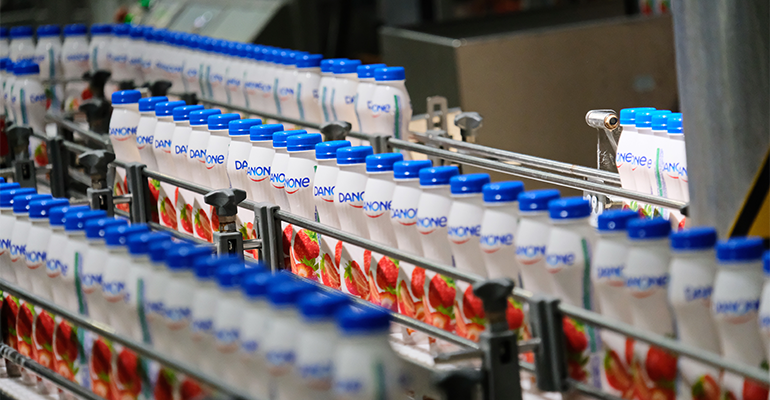News
Boom or bust: Are consumers ready for the alternative protein revolution?
24 Jun 2022
While excitement over alt-proteins is high among industry and investors, major challenges remain for companies looking to convince consumers to switch to a plant-based ‘meat alternative’.
Despite massive interest in the plant-based meat and alt-protein sector, it is important to remember that the category is still nascent, and that companies have many challenges to face when convincing shoppers to make a long-term switch away from meat, said experts speaking as part of a panel session discussing the challenges and opportunities for alternative protein at F&A Next in Wageningen recently.

Moderating the panel, Alon Chen, CEO and co-founder of Tastewise questioned whether consumers are choosing the right brands, and if they are, whether they are choosing them repeatedly.
“Is there actually a viable addressable market for brands to start with?” he asked.
Affordability remains a key issue for alt-protein
Erik Jan Ransdorp, international director of R&D better meals at the Kraft Heinz Company, warned that affordability is a core issue facing the alt-protein space.
“Whenever I think about innovation, I always think of the five fundamental consumer needs - of which taste and affordability are probably the most important ones. And the affordability is an issue.”
“If I look at the shelf here in the Netherlands, and I look at the premium pricing on all the alternatives to meat, it's averaging way over 25%,” he said, noting that previous talks at the conference had discussed more than 900 million people who live in poverty and cannot afford to eat properly already.
“How on earth can we make it accessible to them?” he asked.
Kristen Rocca, principal at investment company Unovis, warned that one of the biggest challenges is that conventional animal agriculture is heavily subsidised.
“Those kinds of subsidies aren't yet afforded to the alt-protein sector,” she said. “So, companies are trying to drive down to price parity, but it takes time. The sector is nascent.”
The investment specialist noted that there is enough room in the market for the different large number of companies looking to innovate in the space – noting that each company is coming with different angles, flavours, prices, formats, and working in different geographies.
“We're trying to displace or disrupt a $1.7 trillion market,” she said. “There's a big world out there that needs to be disrupted in the food system.”
Taste and texture are vital to gain consumer confidence
Roland Snel, global lead for new proteins and technology at ADM, noted that over 56% of consumers now consider themselves to be flexitarian, with almost a third of those eating plant-based alternatives at least once per week.
“The biggest hurdle for them to consume more … by far the biggest factor is taste,” he said.
Frank Giezen, managing director at Ojah, a Dutch company specialising in technologies for the production of plant-based meat analogues, added that while taste, in terms of flavours, is quite easily adaptable, the challenge for many producers is getting the right texture and mouthfeel.
“We always say is it’s texture that's most important, a crispy outside, for instance,” he said, noting that the ‘bite’ and tenderness of a meat analogue is more important to consumers than the flavour, which is often more adaptable.
Snel said the industry is, however, making big steps to improve the taste and texture of products – with a lot of development happening in the food service market, in particular.
Adapting to regional flavour preferences is important
However, he said that it will be vital for companies to focus on identifying the right technological solutions to create the issues of taste and texture.
“One of the hurdles that we still have is that succulence, that bite,” he said, noting that new technologies, such as precision fermentation, are providing new solutions to the challenge.
Adapting to regional tastes and serving local demographics for flavour and format will be vital to gaining a global mass market adoption for alt-proteins, added Rocca.
“We can't push burgers across the world and expect broad adoption of these products,” she said. “Localizing to culinary palates, more novel proteins that have complete amino acid profile [will be needed].”
Health: The biggest factor for consumers, says Tastewise
Chen noted that recent consumer data from Tastewise found that health considerations are the most important driver for consumers looking to switch to an alternative protein.
“According to some of our research, health is five times higher than sustainability and animal welfare combined,” he said. “So, if we actually want to convince people, after flavour, and after affordability … actually health is the main reason consideration.”
Giezen added that many products currently on the market are “not as healthy as they should be,” with high salt content a particular issue for many brands and products.
However, Ransdorp noted that the perception of plant-based and alt-protein as ‘healthier’ has already shifted consumer and retailer habits.
“We've gone through an interesting time in the pandemic,” noted the Kraft Heinz expert. “I guess everybody has seen in his own local supermarket that the aisle of meat changed from a small proportion of vegan or vegetarian to almost 50/50. Right?”
“There was a driver for people to realize, what I put in my mouth actually has a direct impact on my health,” he said. “Sometimes we need a crisis to make a change.”
Related news

Oat Barista: Innovation for game-changing beverages
20 Nov 2025
Oat Barista is a clean label, sustainable, and innovative drink base specifically designed to create the perfect foam in one single ingredient.
Read more
Nitrites: Pressure grows on UK to follow EU’s lead
20 Nov 2025
Pressure is growing on the UK to follow the EU’s lead after the bloc revised its regulations on the permitted levels of nitrites and nitrates in cured meats.
Read more
Empowering innovation in fortification and colouration
13 Nov 2025
Divi’s Nutraceuticals offers a large portfolio of innovative, high-quality ingredients for foods, beverages, and supplements, with bespoke solutions and expert support for product success.
Read more
Danone highlights digestive health as potential ‘tipping point’ for food industry
13 Nov 2025
Danone is betting on a food industry “tipping point” that will bloat the market for healthy products, particularly those related to gut health.
Read more
Standing Ovation and Bel scale up casein production from dairy co-products
11 Nov 2025
Foodtech company Standing Ovation has partnered with cheese specialist Bel Group to manufacture dairy serums for industrial-scale casein production via precision fermentation.
Read more
AI attraction means foodtech startups must ‘prove’ rather than ‘promise’
4 Nov 2025
Reports suggest that artificial intelligence (AI) is sucking investment from foodtech and agritech, but investors say the picture is complicated.
Read more
Will postbiotics become the go-to functional ingredient?
3 Nov 2025
Postbiotics show significant promise for the functional foods market due to their safety profile and beneficial bioactive properties, research suggests.
Read more
Meet the finalists of the Fi Europe Innovation Awards 2025
31 Oct 2025
Who made it to the shortlist of the Fi Europe Innovation Awards 2025? Read about the 23 companies making food and drink products healthier and manufacturing processes more efficient.
Read more
Penguin and Club bars no longer classed as chocolate
30 Oct 2025
Penguin and Club bars can no longer be classified as chocolate after the pladis-owned McVitie’s brands turned to cheaper alternatives amid the ongoing cocoa crisis.
Read more
Shorter drying time, sweeter success!
30 Oct 2025
Curious about cost-effective, sustainable and delicious candy making? Stefan Wessel reveals how Avebe’s solutions reduce drying time and energy use by up to 50%.
Read more